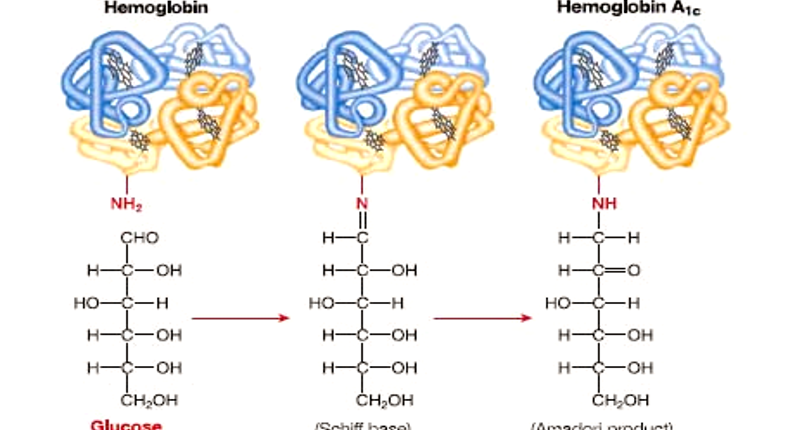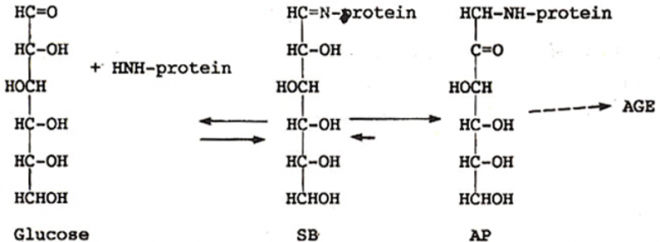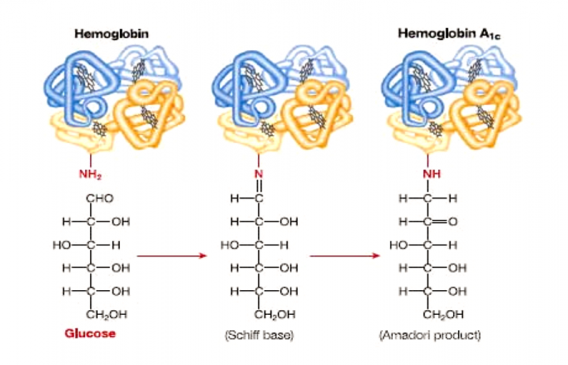Library
Question the week-2 (Answer)
- February 28, 2020
- Posted by: Namrata Chhabra
- Category: Animations Chemistry of Carbohydrates Energy metabolism Learning resources Library Metabolism of Carbohydrates Multiple-choice questions Multiple-choice questions Multiple-Choice questions USMLE Style questions USMLE styled question bank

A 65-year-old man with a history of type 2 diabetes mellitus is complaining of blurred vision and numbness in his toes. Laboratory results are significant for an increased BUN and creatinine, indicative of renal failure, and high HbA1c, indicative of chronic persistent hyperglycemia. Of the several proposed mechanisms, one mechanism responsible for hyperglycemia-induced complications in diabetes mellitus is the non-enzymatic attachment of excess glucose with structural proteins by forming covalent bonds. This reaction should be best described as follows:
- Acylation
- Carboxylation
- Hydroxylation
- Esterification
- Glycation
The correct answer is E- Glycation.
In diabetes mellitus, insulin deficiency promotes hyperglycemia due to non-utilization of glucose. Increased glucose leads to the formation of advanced glycosylation end products (AGEs) via the nonenzymatic glycosylation of intra- and extracellular proteins. Nonenzymatic glycosylation results from the interaction of glucose with amino groups on proteins (Figure 1). AGEs have been shown to cross-link proteins (e.g., collagen, extracellular matrix proteins), accelerate atherosclerosis, promote glomerular dysfunction, reduce nitric oxide synthesis, induce endothelial dysfunction, and alter extracellular matrix composition and structure. The serum level of AGEs correlates with the level of glycemia, and these products accumulate as the glomerular filtration rate declines.

Figure-1-showing the formation of advanced glycation end products (AGE)
Hemoglobin becomes glycated by ketoamine reactions between glucose and other sugars and the free amino groups on the alpha and beta chains (Figure 2). The only glycation of the N-terminal valine of the beta chain imparts a sufficient negative charge to the hemoglobin molecule to allow separation by charge-dependent techniques. This charge-separated hemoglobin is collectively referred to as hemoglobin A1 (HbA1). The major form of HbA1c is hemoglobin A1c (HbA1c), where glucose is the carbohydrate. HbA1c comprises 4–6% of total hemoglobin A1. Since glycohemoglobins circulate within red blood cells whose life span lasts up to 120 days, they generally reflect the state of glycemia over the preceding 8–12 weeks, thereby providing an improved method of assessing diabetic control.

Figure 2 showing the formation of glycated hemoglobin
Any condition that shortens erythrocyte survival or decreases mean erythrocyte age (e.g., recovery from acute blood loss, hemolytic anemia) will falsely lower HbA1c irrespective of the assay method used.
As regards other options-
- Acylation is the attachment of lipids to a structure.
- Carboxylation is a condensation of a biomolecule with carbon dioxide.
- Hydroxylation is an attachment of a hydroxyl group to a biomolecule.
- Esterification is a condensation of an alcohol with an acid.
Thus in the given problem, the correct answer is glycation.
Author:Namrata Chhabra
Leave a Reply Cancel reply
You must be logged in to post a comment.
